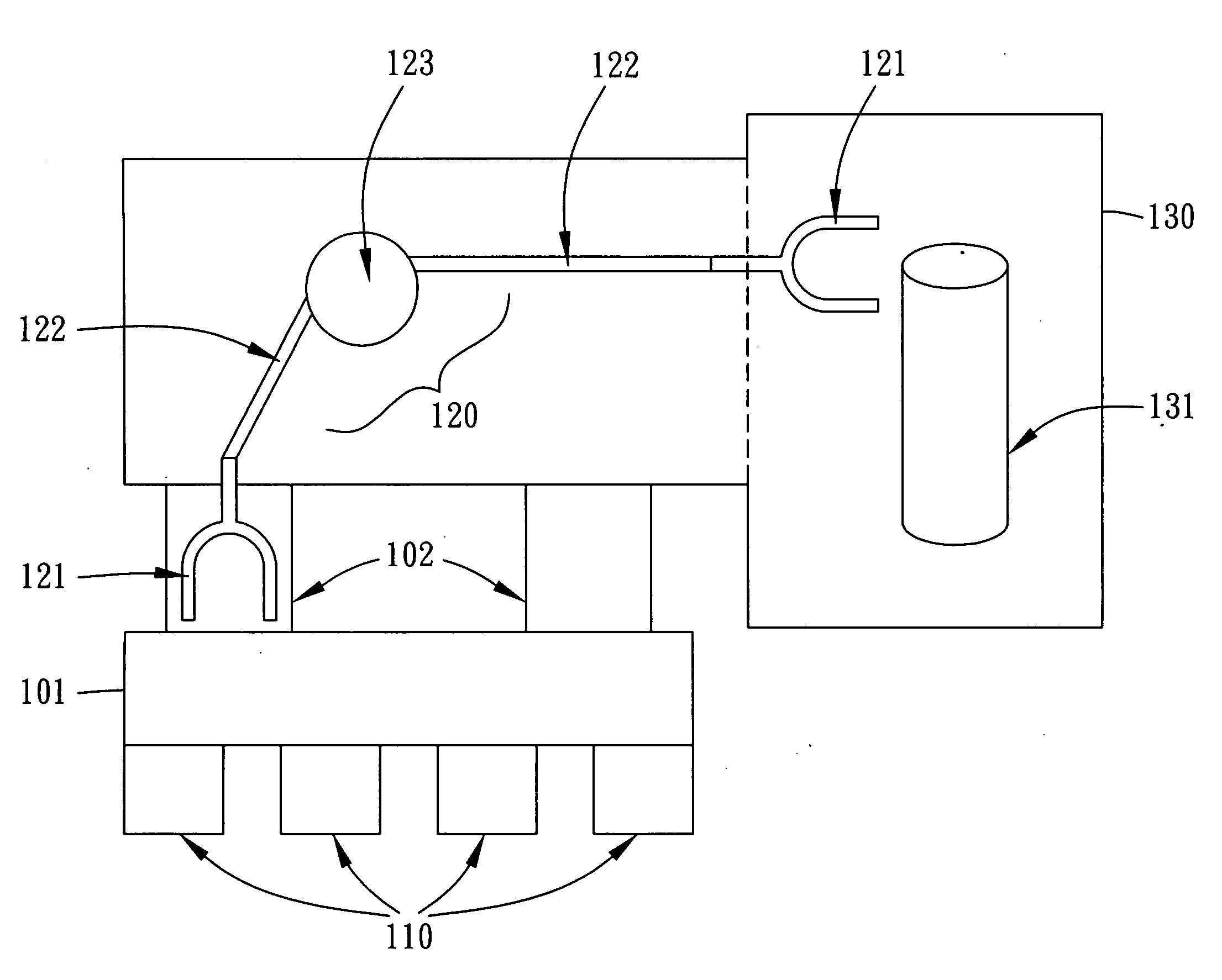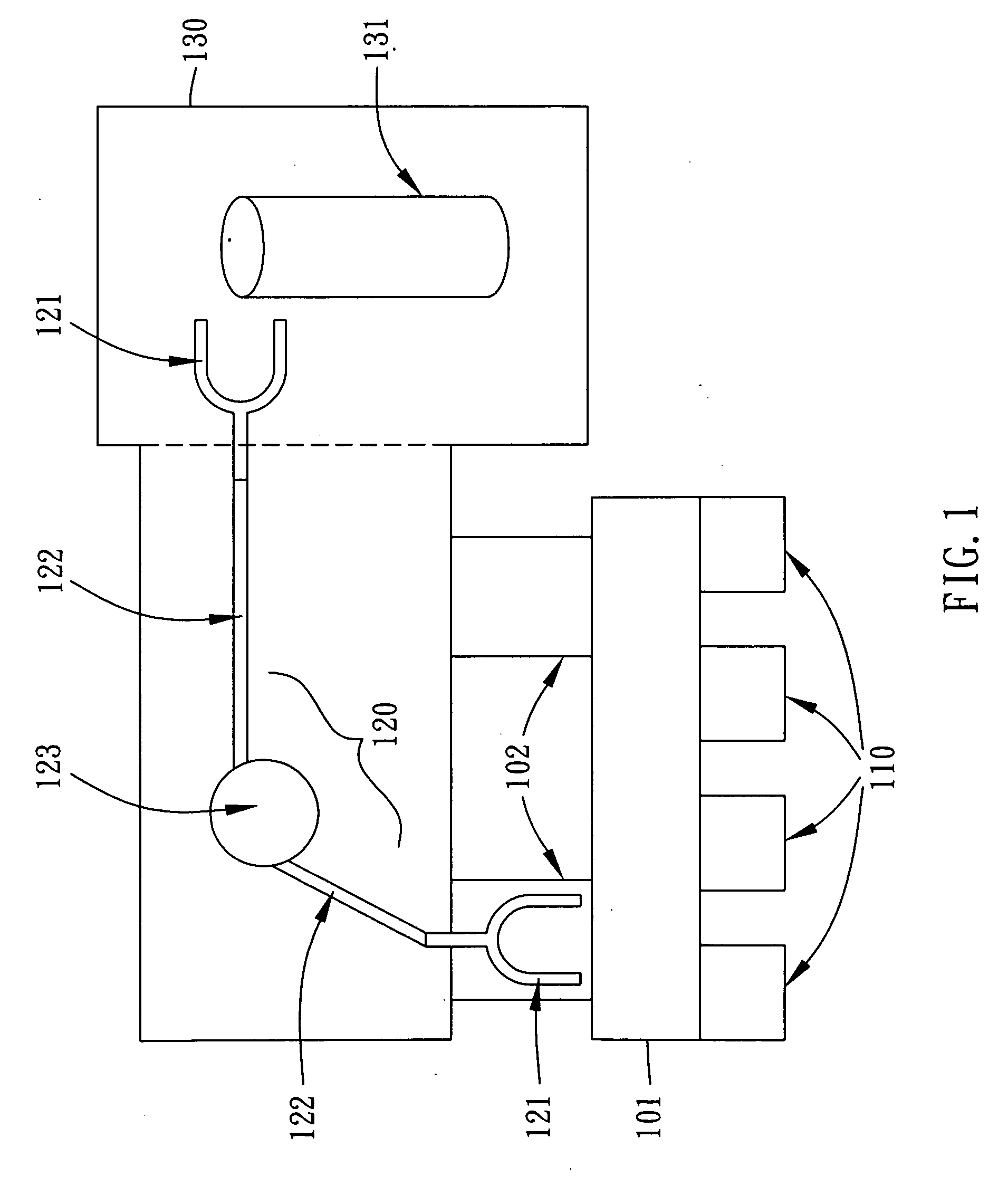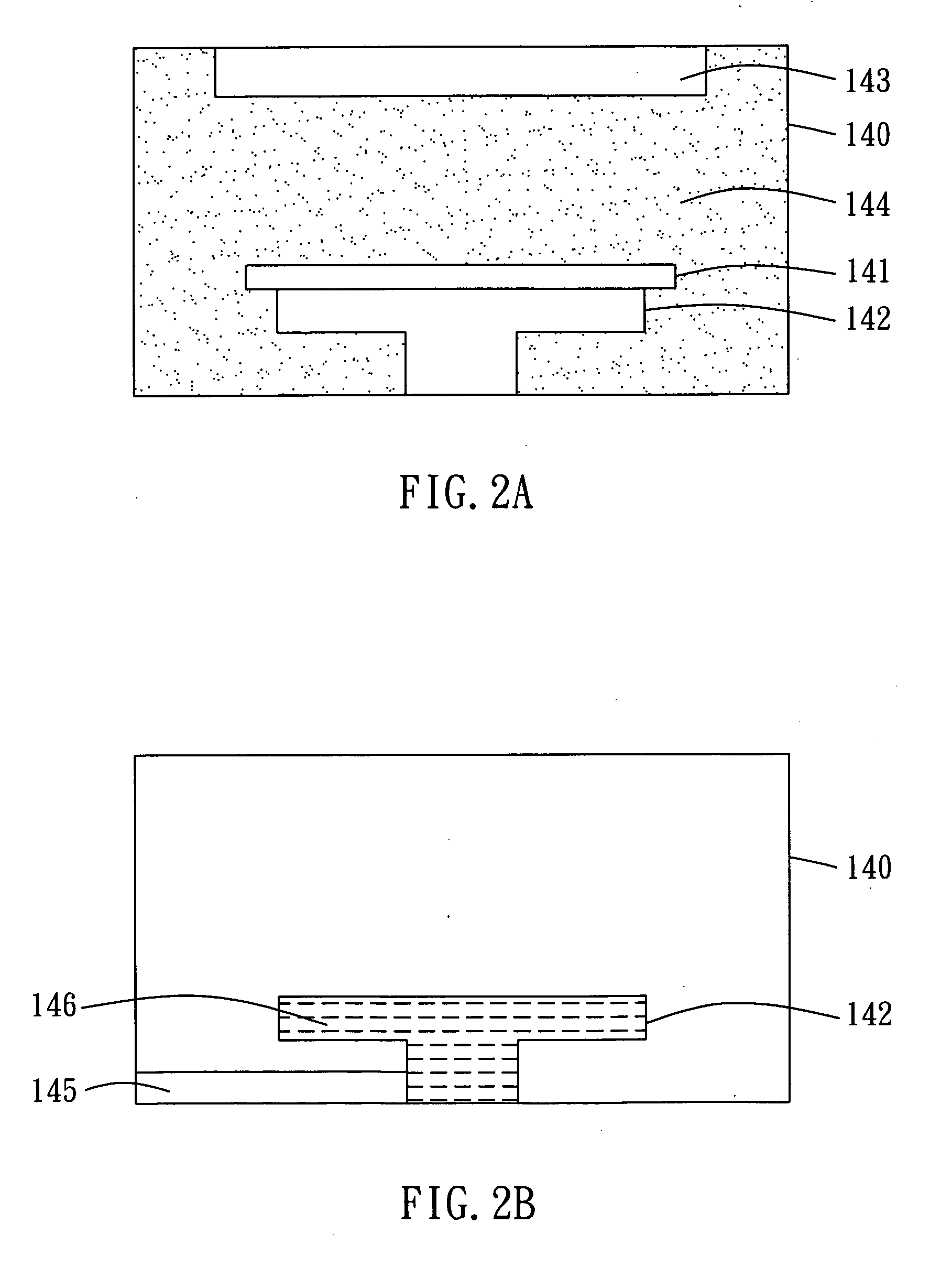Shorten Temperature Recovery Time of Low Temperature Ion Implantation
- Summary
- Abstract
- Description
- Claims
- Application Information
AI Technical Summary
Benefits of technology
Problems solved by technology
Method used
Image
Examples
Embodiment Construction
[0017]A detailed description of the present invention will be discussed in the following embodiments, which are not intended to limit the scope of the present invention and which can be adapted for other applications. While drawings are illustrated in detail, it is appreciated that the quantity of the disclosed components may be greater or less than that disclosed, except for instances expressly restricting the amount of the components.
[0018]An ion implanter capable of performing low temperature ion implantation for use with the invention is briefly described below and illustrated in FIG. 1. The ion implanter comprises a robot transfer 101, a loadlock 102, a robot 120 and an implantation chamber 130. Many or most of the components may correspond to known elements. Herein, as usual, the robot transfer 101 is used as an interface between the ion implanter and the external environment, which always is in an atmospheric / ambient environment. Also, as usual, the loadlock 102 is used as an...
PUM
 Login to View More
Login to View More Abstract
Description
Claims
Application Information
 Login to View More
Login to View More - R&D
- Intellectual Property
- Life Sciences
- Materials
- Tech Scout
- Unparalleled Data Quality
- Higher Quality Content
- 60% Fewer Hallucinations
Browse by: Latest US Patents, China's latest patents, Technical Efficacy Thesaurus, Application Domain, Technology Topic, Popular Technical Reports.
© 2025 PatSnap. All rights reserved.Legal|Privacy policy|Modern Slavery Act Transparency Statement|Sitemap|About US| Contact US: help@patsnap.com



